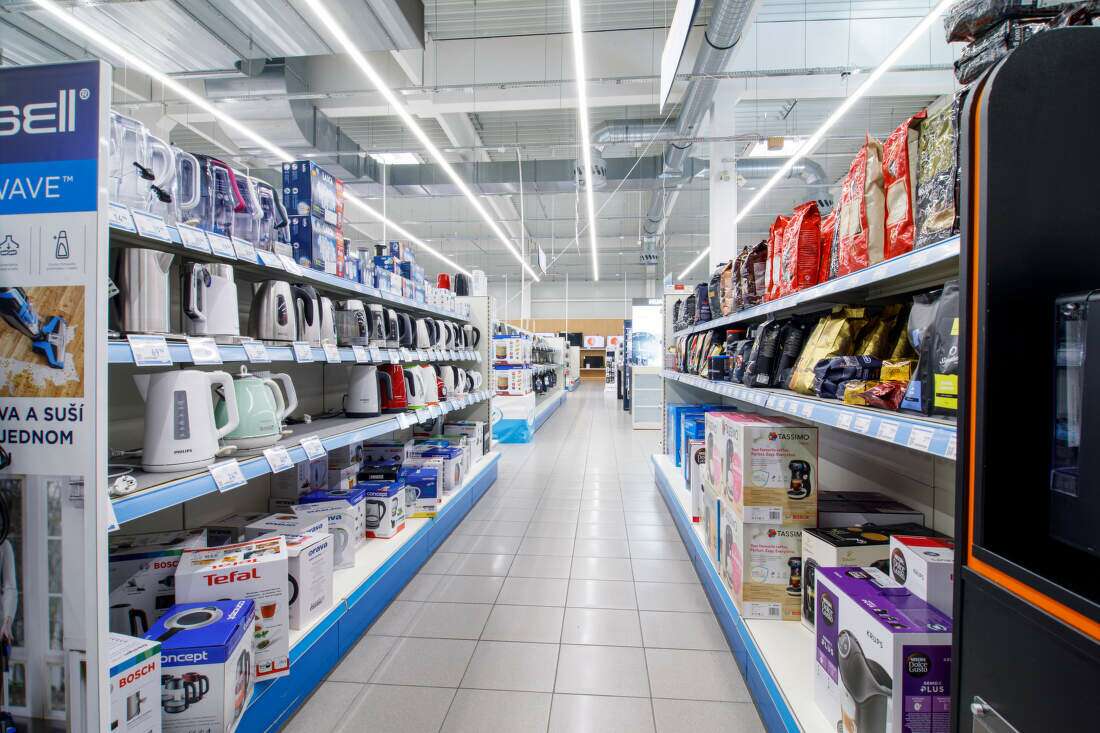
Digital transformation in retail has revolutionized every step of the process – from inventory management and merchandise handling and training through to marketing, customer support, and loyalty programmes. Now with the Covid-19 pandemic and its Omicron variant, its main mission is to keep customers shopping in physical stores while offering them the same experience online. This can be achieved by making offline shopping as similar to online shopping as possible. How does automation help the retail industry bridge the gap between the two worlds and succeed?
Retail has always been based on trust, which is built through outstanding customer care and delivering an exceptional customer experience. This will remain to be true, but the ways and means of serving customers will change dramatically over the next decade. “At the heart of the change is technology. In the future, the shopping experience will be more engaging and convenient both for remote and in-store shopping. Compared to today, more transactions will be made with mobile devices and through social networks – with the physical and virtual worlds merging as a result of the omnichannel concept. Customers will be able to serve themselves to a greater extent, and brands will know each customer perfectly, which will allow them to provide a personalized customer experience,” predicts Viktória Lukáčová Bracjunová, the RPA business unit manager at Soitron.
Martin Ohradzanský, the CEO of the NAY Group – a consumer electronics retail chain that also includes the Electro World subsidiary in the Czech Republic – is well aware of the dramatic changes under way. When he took the CEO’s position some ten years ago, online sales accounted for only a fraction of the company’s total revenue. A decade later, they account for roughly a third of total sales. “In the next few years, more will change than just the online to offline sales ratio. That’s why advances in digitalization and automation are an integral part of our long-term strategy,” adds Ohradzanský.
If a company is to be competitive and profitable in the long term, it needs to be able to serve more customers with existing resources and cope with increasing fluctuations in demand. These occur during seasonal peaks and during pandemics and can be the result of suddenly introduced measures or supply chain disruptions.
A digital transformation is not a short and quick sprint for any retailer. But it’s not a long and strenuous marathon either. The most fitting sporting analogy would be a long-term series of runs – some for shorter distances and some for longer ones – through which a company gradually and systematically moves towards a more digital future.
Companies that have completed several such runs – from basic enterprise information systems through to specialized software solutions for delivery and order management automation – make it easier for their employees to do their job and improve customer service.
The potential for the application of machine learning and artificial intelligence in retail is limitless, and the industry has barely scratched the surface in this respect. The same is true for Robotic Process Automation (RPA). This allows selected tasks, especially those that require a sequence of repetitive steps based on clearly defined rules, to be done by a software robot instead of a human.

Process automation makes it possible to improve customer service and relieve the burden on staff – initially and mainly on those working in the back office or a call centre. “We were increasingly running into capacity constraints when processing orders during seasonal peaks. It was always difficult to handle these situations with temporary staff, and with online sales growing, there was a risk that we would not be able to complete some orders quickly enough,” says Ohradzanský.
That is why Electro World used RPA to automate some processes, such as the order cancellation process. Call centre agents used to handle several thousand order cancellations per month. For each such cancellation, several steps have to be taken in different systems, for example, checking whether the goods have already been dispatched and paid for. “Today, these tasks are performed automatically by a robot instead of people, which gives the staff more time to deal with more complex customer queries and suggestions,” says Lukáčová Bracjunová.
The call centre of the retail chain also automated the process of handling claims under extended warranty as well as selected finance and HR administrative processes. “We plan to introduce robotization wherever it can help us relieve people of work or improve customer service – and ideally do both,” explains Ohradzanský.
One of the main goals of automation is to increase customer loyalty – whether that be by reducing waiting times, providing better information, or introducing new self-service options. “We used to stand in queues in banks for every payment order, but today we do all transactions via internet banking. Retail is moving towards a similar level of automation,” concludes Ohradzanský.
We are in the process of finalizing. If you want to be redirected to our old version of web site, please click here.